Both are Similarly Priced
Both pork loin and pork shoulder are very affordable on a per pound basis and usually cost around $0.99 – $2.29/lb.
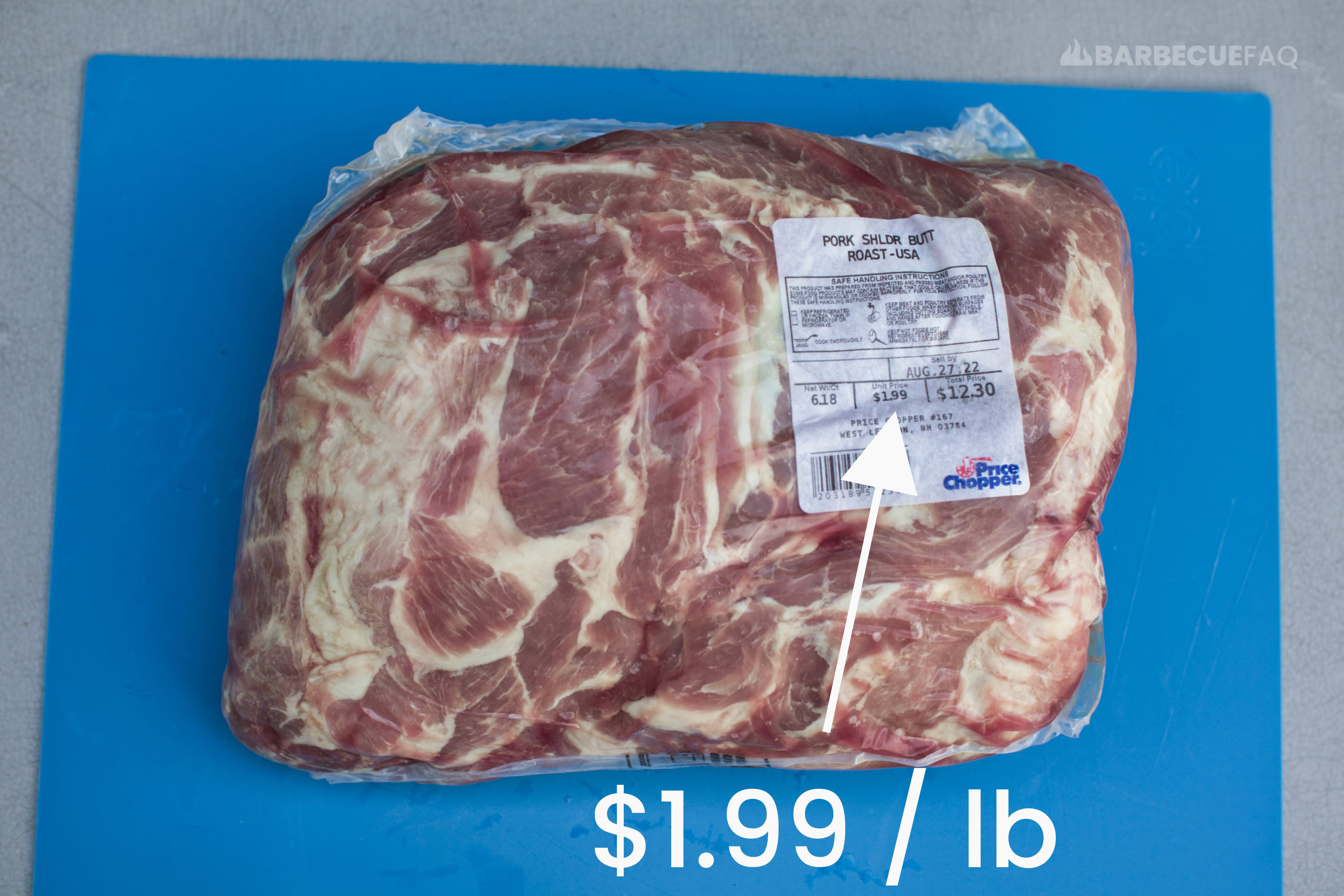
For instance, the meat used for this article was:
- Bone-in Pork Butt: $1.99/lb from my Local Grocery Store
- Whole Boneless Pork Loin: $1.89/lb from my Local BJs wholesale store.
These cuts can also be cut up in a variety of ways.
For instance, pork shoulder can be sold bone-in and boneless and is used to make things like pork steaks, pork on a stick, or pulled pork.
Here’s a full pork loin:
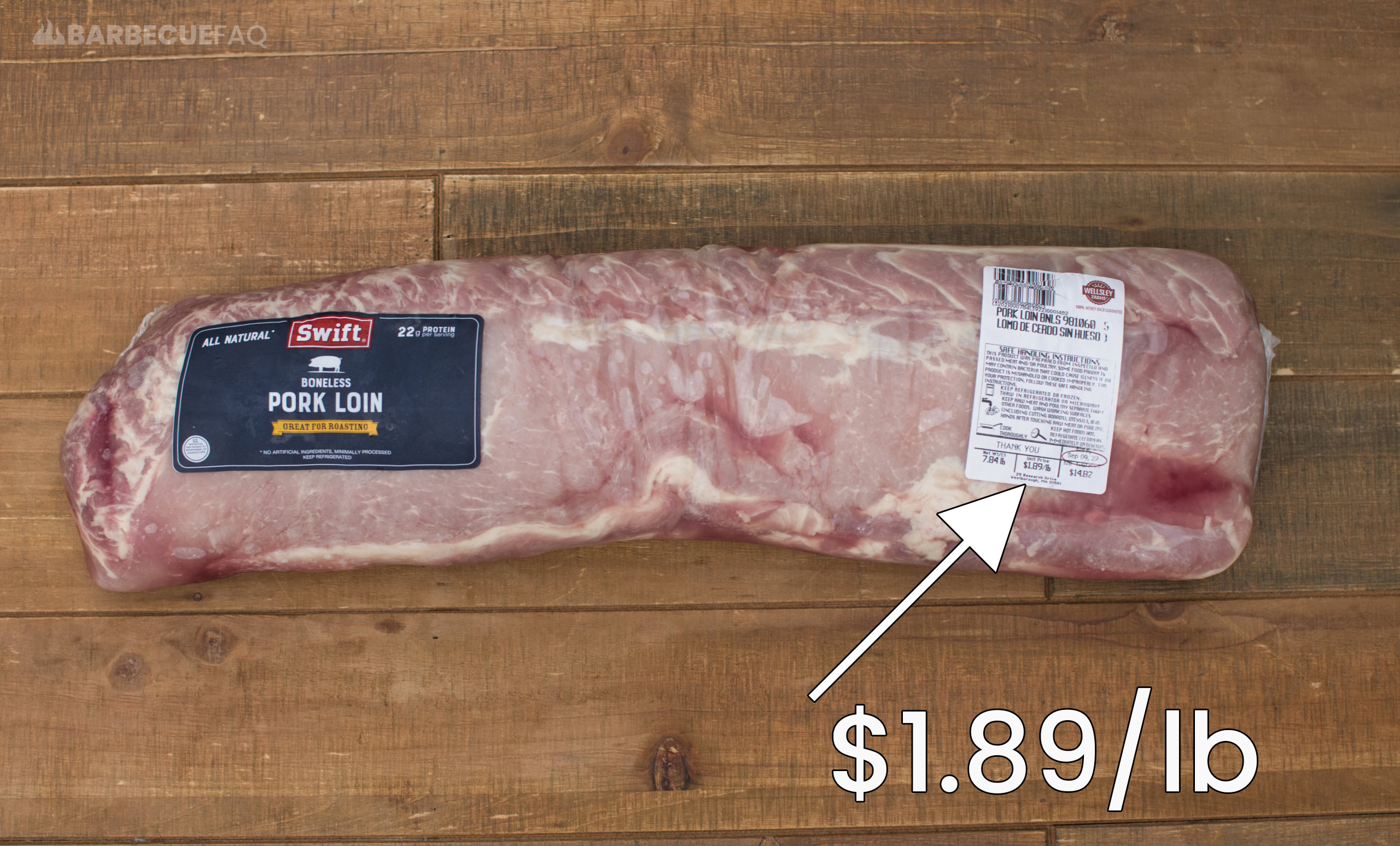
Pork loin can be sold whole (the entire pork loin muscle), or divided into 2 halves:
- blade end
- sirloin end
Differences in Cooking Method
Pork shoulder and pork loin are usually cooked much differently.
Pork shoulder is commonly smoked until 195 – 205F internal. At this temperature the muscle can be quite literally pulled apart.
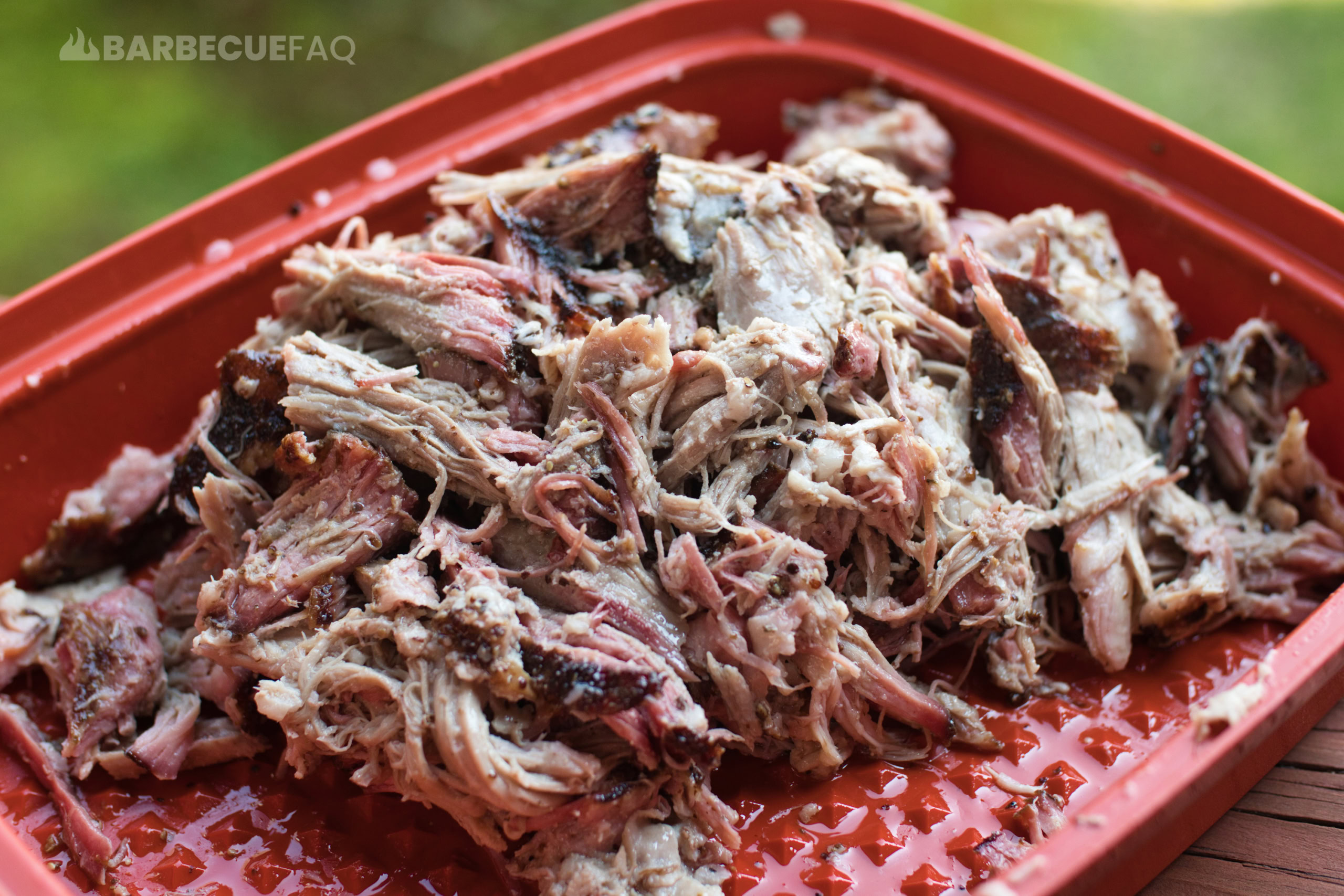
Conversely, pork loin is only cooked until 145F and can be prepped into any number of cuts.
The previous recommendation for cuts like pork roasts, chops, steaks, ham was 160F internal. However, in 2011 the United States Department of Agriculture changed their recommendations to 145F.
An added benefit of this change is that you can markedly improve moisture content without drying out the meat or risk of trichinosis infection.
Most of the pork loin doesn’t have a ton of intramuscular fat so the above improves the eating experience greatly.
Can You Use Pork Loin for Pulled Pork?
Any recipe that calls for “pork loin” for pulled pork is doing a disservice to readers.
Mainly because they’re not qualifying what they mean by “pork loin.”
Above I noted, there are 2 ends:
- The Blade end (shoulder end)
- The Sirloin end (towards the rear)
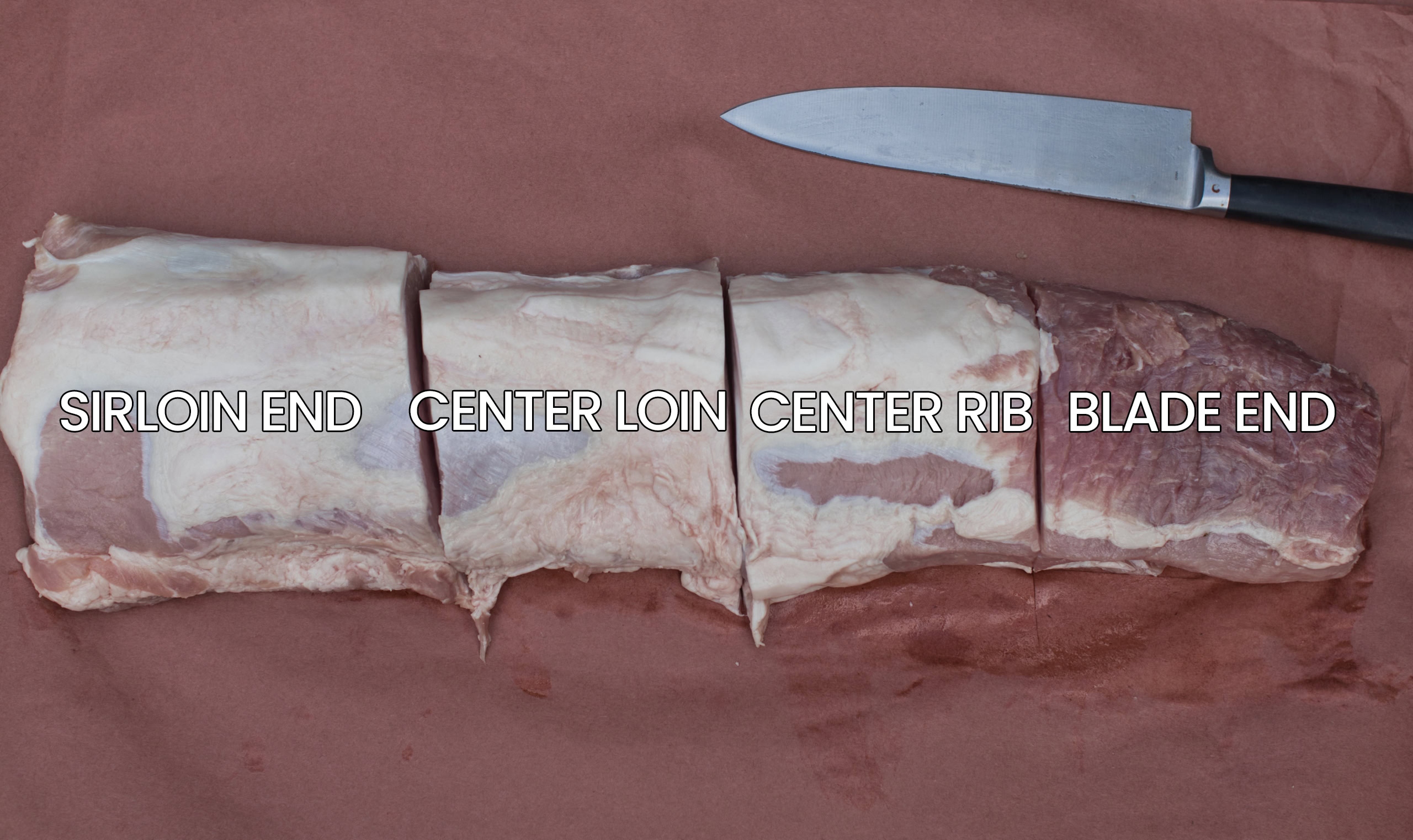
When a pork loin is cut up, you can get any number of different cuts; Different parts of the loin work better than others for different methods of cooking.
- Roasts,
- Chops,
- Steaks,
- etc.
Of these 2 halves, the blade-end is better suited for pulled pork.
It shares similar qualities to the pork butt, which is where the scapula or shoulder-blade bone exists – “hence, blade end” of the loin – and contains intramuscular fat that works well to keep the meat moist.
The sirloin end is more so suited for cubing up into stew meat or slicing into thin chops.
Here’s this end – it is incredibly lean and will dry out for pulled pork.
If your goal is to use pork loin for pulled pork, do yourself a favor and look for the blade-halved loins.
The blade end is a darker hue of pink and looks more like a relaxed muscle.
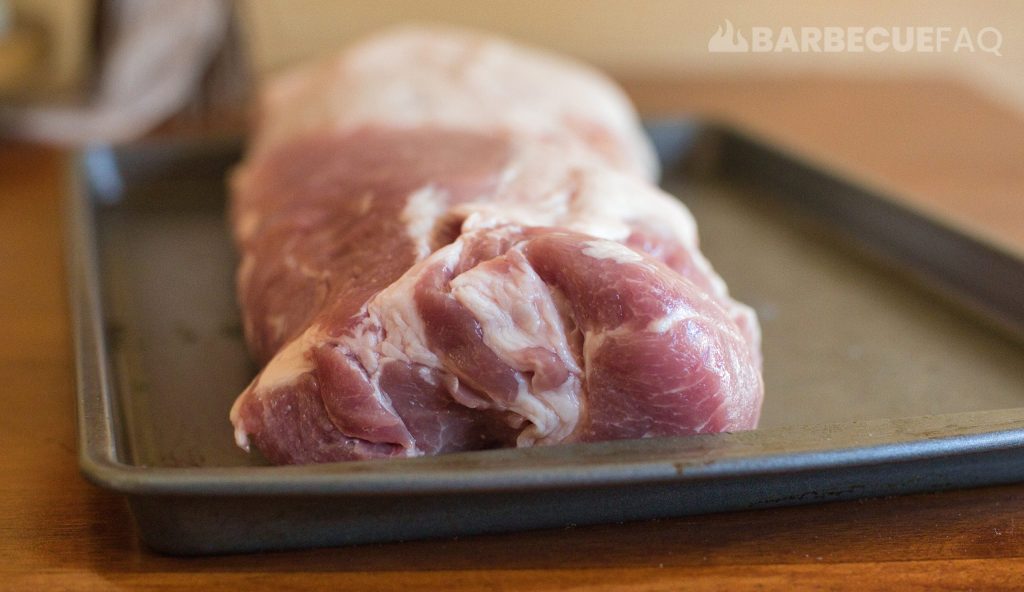
The sirloin end is pinker and looks “contracted.”
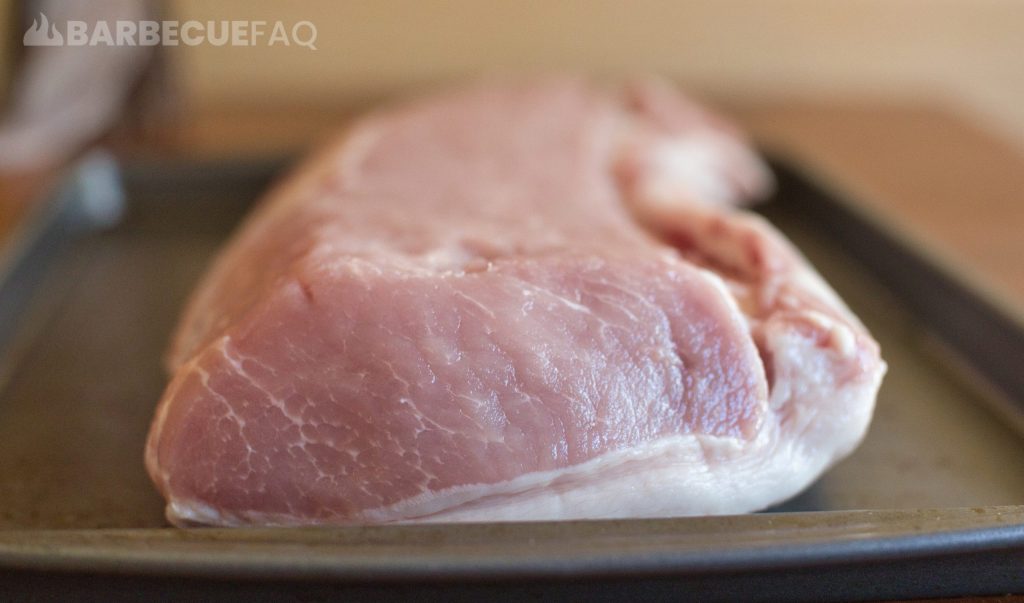




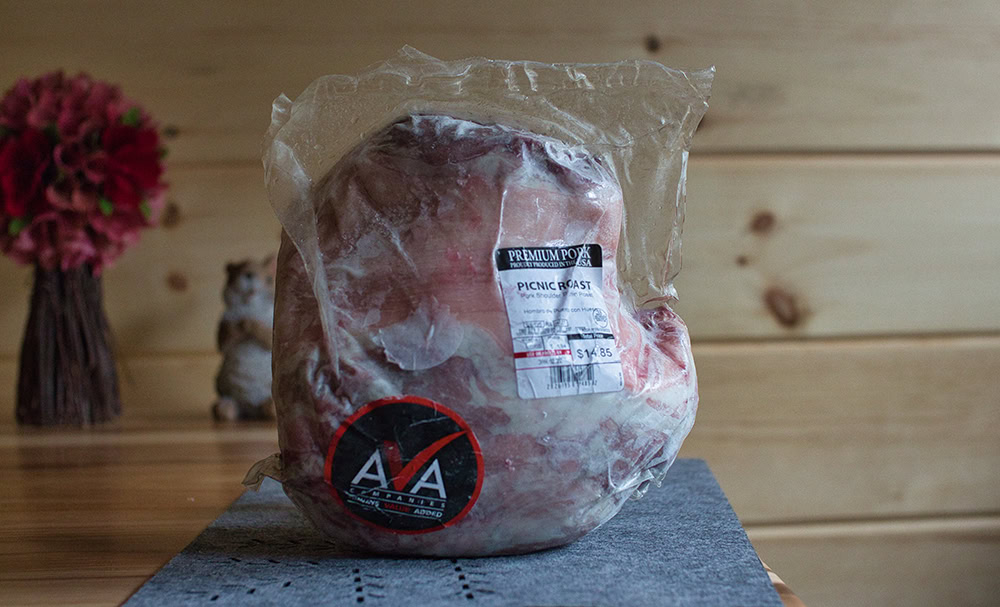
2 comments
Michelle Foose
Very clear and helpful. Thank you.
Dylan Clay
Happy to help Michelle!